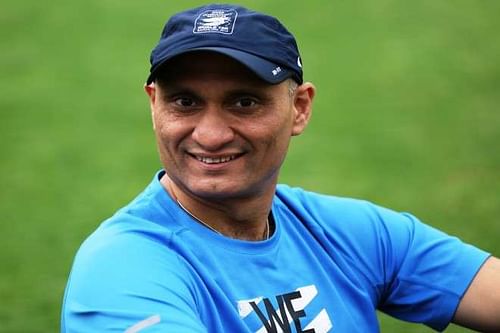
"In the span of 10 years, India has gone from three marathons to three hundred" - Vivek Singh, MD Procam India, speaks

Director at Procam International, Vivek Singh was first a spectator at the London Marathon nearly a decade ago. Today, he manages the country’s biggest marathons, spearheading the constantly-growing running movement in India.
Ahead of the TCS World 10K in Bengaluru, Mr. Singh spoke to us about how the running scene in India has changed, and why the practice promises to take off in the country.
Singh is confident it will grow. "There was a time there were only three marathons in India,” he says. “Three. That was just over a decade ago. And you know how many there are now? Three hundred. It’s brilliant.”
That isn't to say it’s easy planning a marathon, and it’s even more difficult to execute. “There are so many logistical issues that go into getting it all together, and it’s from the small things to the really big things. Even getting a date together is incredibly difficult. You have amateurs from all over the country – and elite athletes from all over the world. Finding out when they are and aren’t competing, then settling on a date, for a significant number of athletes, that itself is a logistical maze.”
“After you’ve planned that most basic of details, you have to plan travel for each, and then actually executing that, that’s just one bit.” But it has become much better for organizers over the years, says Singh. “Authorities are far more cooperative now, which makes it easier. Earlier, they’d ask questions like ‘Why do you want to close this road, why do you need to block this way?’ and those are things essential to a marathon.’ Now it’s much easier. As a result of running having taken off in such a big way, they understand, and when we have to get permissions and written permits from state goverments, it’s not as hard.”
And the growth of running in the country is exponential, according to Singh. “Everyone is running, from the youngest kids to senior citizens. It’s not age restrictive, it’s not gender-restrictive, nothing. Anyone can pick up the sport and stick with it. It started with the Standard Chartered Mumbai Marathon years ago, and we’ve never looked back since.”
It’s also led to a significant increase in the awareness of, and contribution to, charities in India, says Singh. “There are many, many runners participating for charitable causes. They’re raising awareness for medical conditions, for causes that really need to be highlighted, and running and marathons are a brilliant way to put those messages across to a larger audience.”
A number of marathons have special sections dedicated to charitable causes. In addition to regular runners supporting a charity of their choices, groups of corporates or individuals run together towards a specific cause. “Companies also participate in CSR (corporate-social responsibility) initiatives, and they run for charity too. It’s great to see big firms, which previously did not have as much interest in participation, field teams that start training months in advance. They have company events to start preparing, start training, work together to be able to run the distance.”
Singh is particularly happy about how marathoning, previously an activity restricted to ‘elites’, has taken off so massivelyamong all sections of society. “So many homemakers are running, too. That’s a demogrpahic that previously didn’t really take up the sport, and in the last number of years that physical activity, that awareness of health and fitness, it’s really taken off.”
But there are other benefits to running than fitness, and Singh expounds on them. “It’s not just about getting healthy, I don’t think. People don’t just run for fitness. It’s a social event, it’s a way to meet new people, experience your city, and help a cause that needs to be highlighted.”
Running started off small in India, but now with over 300 marathons and growing